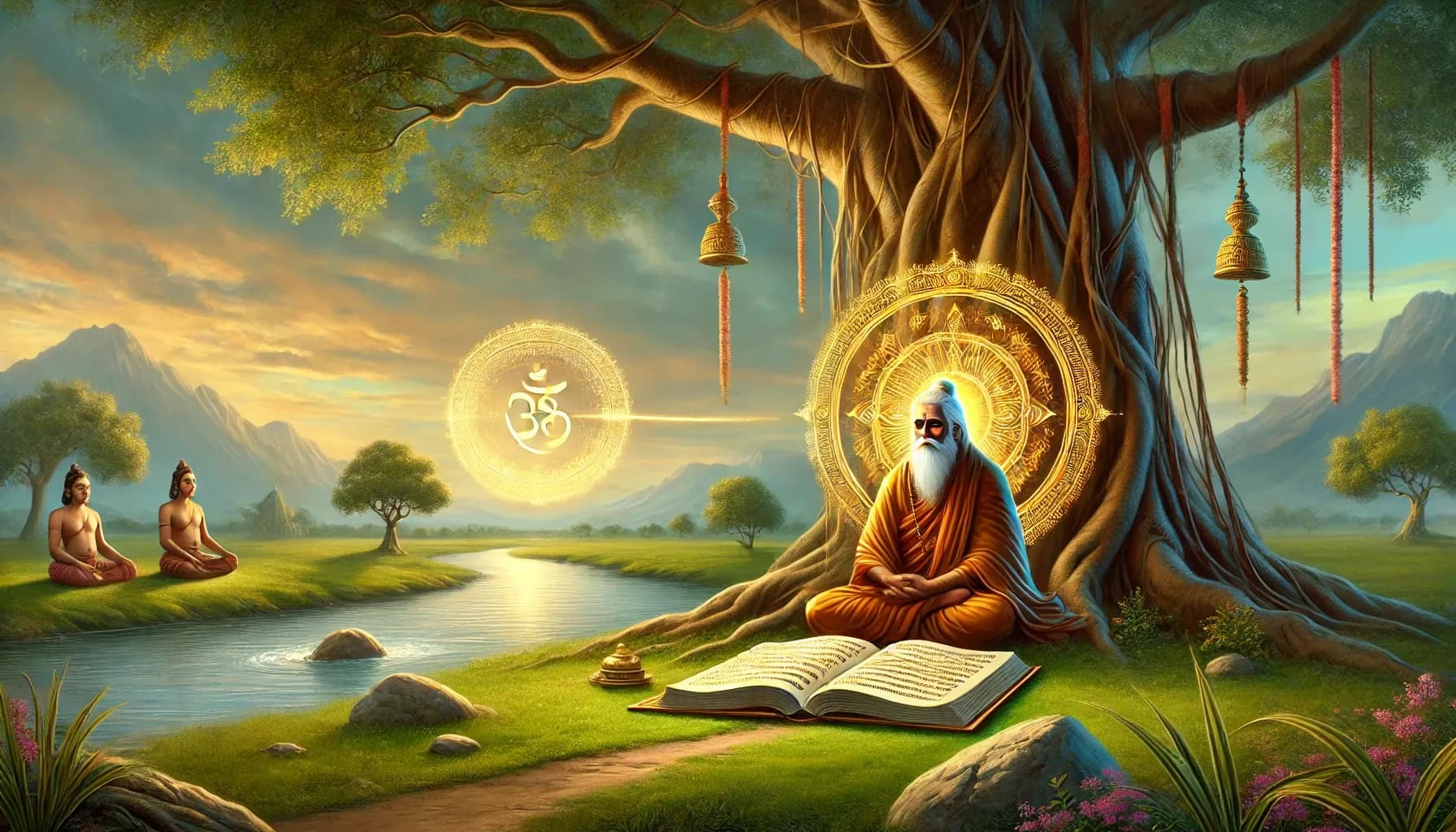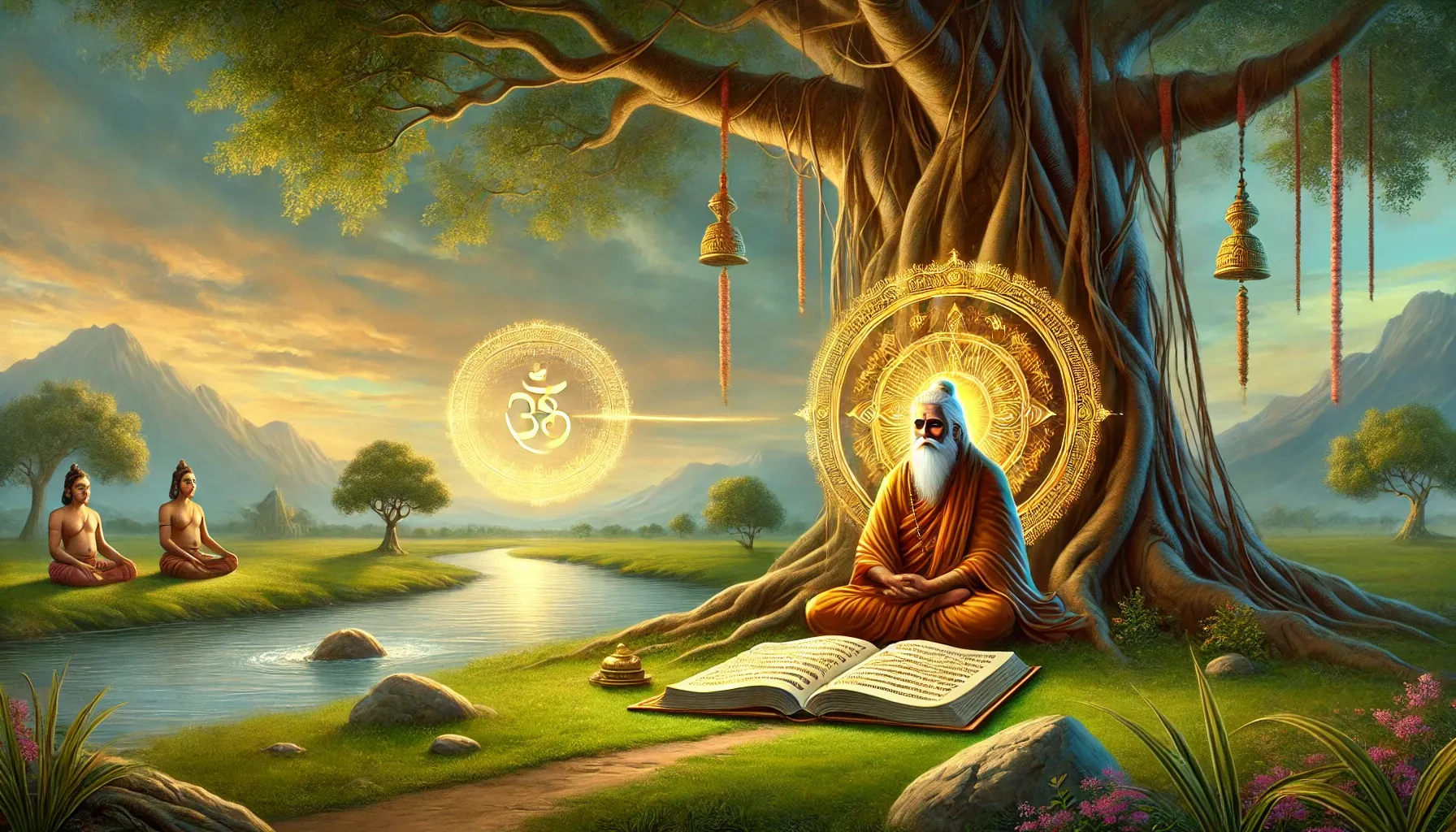PEACE
Finding Inner Peace in a Chaotic World: Lessons from the Upanishads

In a world that moves at an ever-increasing pace, where distractions are endless, and stress is a constant companion, the quest for inner peace seems elusive. The Upanishads, the ancient wisdom texts of India, offer timeless guidance on transcending external noise and finding stillness within. Their teachings emphasize that true peace is not dependent on external circumstances but is an inherent quality of the self, accessible to those who seek it through awareness, introspection, and detachment from the transient.
The Nature of Inner Peace
The Upanishads teach that peace is not something to be acquired from the outside but is our very essence. The Chandogya Upanishad declares, Tat Tvam Asi—"You are That," affirming that our true nature is boundless consciousness, beyond suffering and turmoil. By recognizing this inner reality, we detach from the fleeting disturbances of the world and connect with a deeper, unshakable tranquility.
Transcending External Noise
The Katha Upanishad tells the story of Nachiketa, a young seeker who overcomes fear and confusion through self-inquiry. His journey reminds us that external chaos does not dictate our inner state. The Upanishads advocate practices such as meditation (dhyana) and self-reflection (vichara) to silence the mind’s chatter and awaken inner stillness. By turning inward, we develop the ability to witness the external world without being consumed by it.
Practicing Detachment (Vairagya)
A key principle in the Upanishads is Vairagya, or detachment. The Isha Upanishad proclaims: Ten tyaktena bhunjitha—"Enjoy the world with renunciation." This does not mean rejecting life but understanding that attachment to material possessions and fleeting emotions leads to suffering. When we let go of our need for control and outcomes, we cultivate an inner calm that remains undisturbed by external events.
Cultivating Self-Knowledge (Atma Vidya)
The Mandukya Upanishad describes the four states of consciousness: waking, dreaming, deep sleep, and the ultimate state—Turiya, or pure awareness. It teaches that peace arises when we identify not with the ever-changing roles we play in life but with the unchanging self (Atman) that witnesses it all. By embracing this perspective, we free ourselves from anxiety and fear.
Silence as a Path to Peace
The Mundaka Upanishad advises, "Let a wise person, having known the self, be calm, self-controlled, and withdrawn." Silence—both external and internal—becomes a gateway to peace. The practice of Mauna (conscious silence) and Japa (repetitive chanting of a mantra) helps anchor the mind, reducing stress and fostering clarity in the midst of chaos.
Practical Steps to Find Peace in Daily Life
- Meditation – Spend time daily in silence, observing your thoughts without judgment.
- Mindful Detachment – Accept change and uncertainty as part of life, without clinging to outcomes.
- Self-Inquiry – Regularly ask, "Who am I?" to remind yourself of your deeper essence.
- Gratitude & Simplicity – Reduce unnecessary desires and appreciate the present moment.
- Compassion & Service – Engaging in selfless acts brings fulfillment beyond personal worries.
The Upanishads remind us that while chaos may exist externally, it does not have to reside within us. By anchoring ourselves in the wisdom of the self, practicing detachment, and cultivating silence, we can navigate the world's turbulence with serenity and strength. Inner peace is not a distant goal but a present reality—waiting for us to recognize and embrace it.
If you seek deeper insights and practical ways to integrate these teachings into your life, explore Ayodhaam—a platform dedicated to spiritual growth and self-discovery. Join us in uncovering ancient wisdom and applying it to modern life.

